
Golf Terminology and Etiquette
Golf Clubs
There are different variety of clubs, but the main thing to remember is the number and type. The lower the number (e.g., 3, 4), the further the ball will fly. The higher the number (e.g., 8, 9), the shorter the ball will fly.
Woods
These are generally the long clubs with the soft head covers. Generally, golfers will carry a Driver and possibly one or two additional woods.

Hybrids
Hybrids are more common now in that they’ve replaced some of the long irons. Typical numbers are 2, 3 or 4. Some have higher numbered hybrids, but those are exceptions.
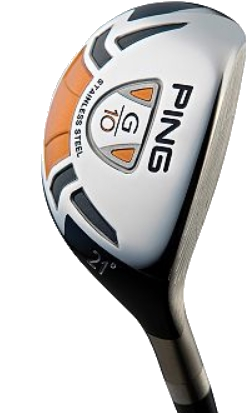
Irons
Irons are all steel and are individually numbered and golfer will refer to them by this number. Typical range is 3 – 9, and clubs will have the numbers on them.
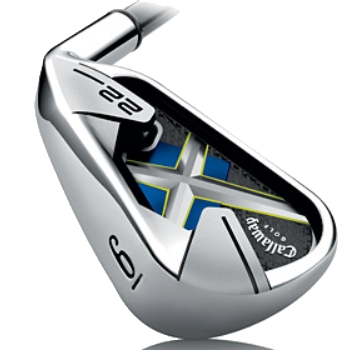
Wedges
Wedges are used for the short shots, and golfers typically have between 1 and 3 in their bag. Golfers will typically refer to them in one of two ways depending on how they are labeled. Some are labeled by the degree (loft) and some are labeled by their type (e.g., S = sand wedge, L = lob wedge, etc):
- By the loft (degree): they will say “hand me my 54 degree club.
- By the type: they will say: “hand me my sand wedge, pitching wedge, lob wedge, etc.”

Putter
This club is used to putt the ball while on the green. This is the only club that is used on every single hole.
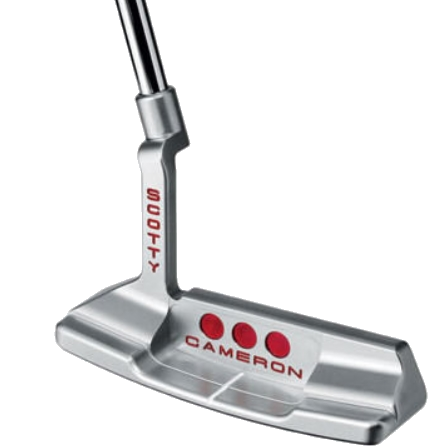
Cleaning Club Parts
The parts of the club that need to be cleaned are the grips and grooves. Ask the golfer whether they would like these to be cleaned after every shot, and if so, ask how he would like them cleaned (wiped with a towel only, use cleaning brush). Note: cleaning brush is only for the grooves, not for the grips.
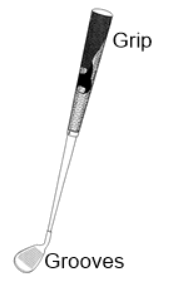
When arriving at the course:
- Arrive at least 30 minutes before the event.
- Greet your golfer with a warm smile at the pre-arranged location.
- Ask your golfer if he would like one of his towels to be wet.
- Ask the golfer if he would like you to carry any extra balls and/or tees. Since the outfits do not have pockets, keep them handy in the cart.
Scoring
- Each hole, scores are written down by counting the number of times the golfer swings a golf club in an attempt to hit the ball (practice swings do not count).
- Each hole has an indicated Par score (shown in sample scorecard below). Golfers will either tell you the actual strokes (for example: “I shot a 4”), or they will tell you their shots using the key terms below related to Par (examples used are from Hole #1 below where Par for the hole is 5 strokes):
- Par: strokes equal the Par number for the hole (ex: 5)
- Birdie: strokes equal one less stroke than Par (ex: 4)
- Eagle: strokes equal two less strokes than Par (ex: 3)
- Bogey: strokes equal one additional stroke than Par (ex: 6)
- Double-Bogey: strokes equal two additional strokes than Par (ex: 7)
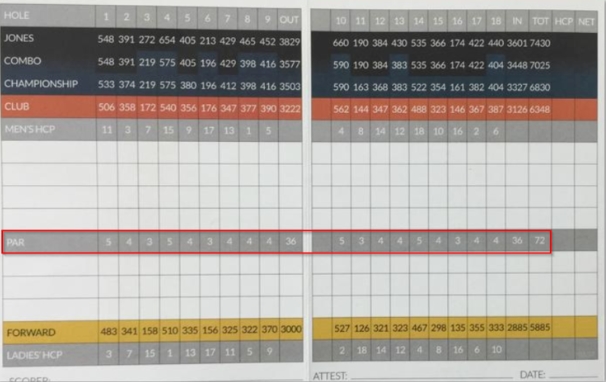
General Duties
- Towels: Before starting, ask the golfer if he has a towel he would like you to get wet to be used for cleaning. Some golfers may want to use separate towels to clean different items such as one for balls and one for the clubs. This should be cleared up before play begins.
- Ball tracking: when your golfer hits, pay close attention to where the ball went to make it easy to find.
- Cleaning golf balls: golf balls can only be cleaned after the following actions. Unless it’s one of the below, the ball should never be touched.
- When the golfer gets the ball on the green and he marks it
- Af ter the golfer holes out (finishes the hole).
- Raking bunkers: bunkers are the sand areas. After a golfer hits his ball out, your job will be to rake out any marks so that it is smooth for the next group.
- Filling/replacing divots: after a golfer hits his ball out of the fairway, there is usually a divot (hole) left behind.
- Get the chunk of grass that was hit out and put it back in the divot. If this is not available, then
- Fi ll the divot with this mix completely to help grow the grass back. Many golf carts will have a container with divot mix.
- Help keep the pace of play: the golfers should keep up as much as possible with the group in front of them. If you notice the group is falling a little behind, meaning you can’t see them in front of you, assist the golfer with anything you can do to speed things up.
- Flag: once all golfers are on the putting green, the first caddy to approach the green should pull the flag and place it in a location that will not interfere with anyone’s putt. To be safe, place the flag just outside the putting green making sure it’s not in anyone’s way. When all golfers are done with the hole, the caddy assigned to the golfer last to finish the hole should put the flag back in the hole.
- CHEER ON YOUR GOLFERS AND HAVE FUN!!!!
Etiquette
- Never use your phone for personal purposes during the round. Either turn it off or put it in silence (not vibrate mode). Your attention should be 100% on the golfer.
- When someone is going to hit, do not stand in their line of sight and remain quiet. Stand behind the golfer or on the side where you are sure he can’t see you.
- When on the green, be careful to not step on someone’s “line” (shown by the arrows below). Either step over or walk around it.
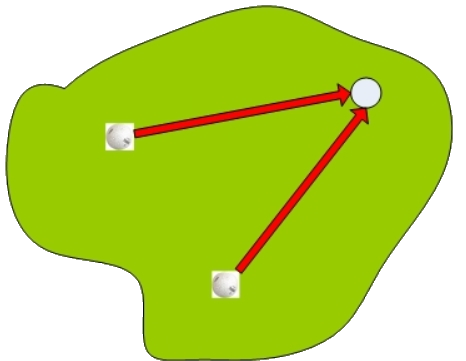
Golf Caddie Terminology
- Address: A golfer positions his or her body immediately before hitting the ball. Every golfer has his or her unique address.
- Away: You are said to be ‘away’ when you are the farthest distance from the hole.
- Back Nine: The second half, or last 9 nine holes, of an 18-hole course.
- Backspin: A reverse spin on a golf ball which has been hit towards a target.
- Backswing: The initial part of the golf swing which finishes as the club stops moving above your head in preparation for the downswing.
- Ball Marker: Any small flat object which is used to mark the position of your ball when it is on the green.
- Ball Mark Repair Tool: A fork-shaped tool which is used to fix marks made when your ball lands on the green.
- Break: When you are putting on the green and your ball begins to turn, the term break is used to refer to the amount of turn which occurs.
- Breaking Down: The term breaking down refers to the movement of your wrists as you bend them while putting.
- Bump & Run: As the name suggests a bump and run describes a ball which is hit into the air flies towards the target and then ‘bumps’ into the ground and ‘rolls’ the rest of the way towards its target.
- Bunker: A bunker is a hazard area which is filled with sand in his usually sited near the green or on the fairway.
- Carry: The carry is a term which refers to how far your golf ball flies through the air.
- Cavity Back Iron: A cavity back iron is a particular type of iron which has the majority of the club head’s weight distributed around its perimeter. The back of the club head is basically just a large cavity and this helps to reduce the mass in both the center and the back of the head, thereby creating a bigger head and a larger ‘sweet spot’ on the face.
- Course Rating: Every golf course is given a rating which refers to the degree of difficultly of the course. The higher the course rating, the more difficult the golf course is to play.
- Crossed Over: Crossed over is the term which describes the shaft of a golf club when it is at the top of the backswing and facing towards the right of the target (for right handed golfers).
- Cup: The cup is simply another word the hole in the green which is the ultimate target for the golf ball.
- Dimple: Dimples are small indentations which cover the surface of a golf ball.
- Divot: A divot is a small piece of turf which is removed by your golf club when you hit a ball. Divots should be repaired (replaced) as a matter of basic golf course etiquette.
- Drive: The drive is the initial shot on each hole which is taken from the tee.
- Drop: A drop is the practice of returning your ball to the course by dropping it onto the playing surface after it has been hit out of bounds or into an area from which it is unplayable.
- Fade: A fade is a shot which sends the ball veering slightly to the right (for right-handed golfers).
- Fairway: The fairway is the entire in-bounds distance which runs from the tee to the green and which is kept neatly trimmed.
- Fat: A shot is said to be hit ‘fat’ when the club-face strikes the ground before hitting the ball.
- Flex: Flex refers to the amount of bend within the shaft of a golf club.
- Fore: The word ‘fore’ is shouted loudly as a warning signal when a ball is hit and heading in the direction of another player.
- Fringe: The fringe is a collar of grass which surrounds the green in which the length of this grass is typically shorter than the fairway but longer than the green itself.
- Front Nine: The first half or first nine holes of an 18-hole course.
- Gimme: A “gimme” occurs when your ball lies on the green so close to the hole that your playing partner does not require you to actually hit the ball in.
- Green in Regulation: This is a term used for getting your ball onto the green in one shot on a par 3 in two shots on a par 4 hole or in three shots on a par 5 hole.
- Handicap: A handicap is a system of adjustment to the score system so that golfers of different skill levels can compete with one another without the better players dominating the game.
- Hard Pan: Hard pan refers to areas of ground on the golf course that are extremely hard-packed.
- Hazard: Hazards are area of the golf course (typically sand and water) which are designed to make life difficult for players.
- Hole: The hole (or cup) is the ultimate target for the golf ball on each hole.
- Holed Out: A player is said to ‘hole out’ when his ball enters the hole.
- Hook: A hook shot is a shot which bends to the left (for right-handed golfers).
- Lag Putt: A lag putt is a long putt the goal of which is to have the ball stop within a short distance (typically 2 feet or less) of the hole.
- Laid Off: This occurs when the club shaft is pointing to the left of the target at the top of the backswing (for right-handed golfers).
- Lay Up: This term refers to a shot which is deliberately intended to fall short of the green in order to avoid getting into trouble.
- Lie: The lie is the position of your ball following a shot and, in particular, refers to the condition of the ground in the area in which the ball has landed.
- Line of Putt: The line of putt is the line that a player wants his ball to take following a stroke on the putting green. The line of putt includes a reasonable distance on either side of the intended line but does not extend beyond the hole.
- Loft: Loft can refer to the angle that the head of a golf club with the ground and to the relative height to which a particular club will hit the ball.
- Lost Ball: A ball is said to be lost if:
- It is not found (or identified as his) by the player within five minutes after the player, his partner(s) or caddies(s) have begun to search for it.
- The player has hit a provisional ball from the spot where the original ball is likely to be or from a point nearer the hole than that place.
- The player has put another ball into play under the penalty of stroke and distance.
- The player has put another ball into play because it is known or almost certain that the ball has been moved by an outside agency, is in an obstruction, is in an abnormal ground condition or is in a water hazard.
- The player has made a stroke at a substituted ball.
- Mulligan: A mulligan is an illegal second attempt at a shot which went wrong.
- Nuked Shot: A nuked shot is a shot which is hit far harder and longer than you would normally hit the ball with a particular club.
- Out-of-Bounds: This is the area which is outside of the course and which is often marked with white stakes.
- Out-to-in Blow: This term is simply another way of saying ‘Coming Over The Top’ which describes the movement of the club as it travels through the downswing and into a right-to-left pathway across the ball (for right handed golfers).
- Partner: A partner is a player who is associated with another player on the same side. In threesome, foursome, best-ball or four-ball play, where the context so admits, the word player is taken to include his partner or partners.
- Penalty Stroke: A penalty stroke is one which is added to the score of a player or side as specified within the rules. When playing in a threesome or foursome, penalty strokes do not affect the order of play.
- Rub of the Green: A rub of the green is said to occur when a ball which is in motion is accidentally deflected or stopped by an outside agency.
- Stipulated Round: The stipulated round consists of playing the holes of the course in their correct order (unless otherwise authorized by the Committee) and the number of holes in a stipulated round is 18 (unless a smaller number is authorized by the Committee).
- Stroke: A stroke is the forward movement of the club made with the intention of striking at and moving the ball. Should a player check his downswing voluntarily before the club head reaches the ball then he has not made a stroke.
- Substituted Ball: A substituted ball is a ball which is put into play in place of the original ball which was in play, lost, out of bounds or lifted.
- Tee: A tee is simply a device which is designed to raise the ball off the ground. A tee must not be longer than 4 inches and it must not be either designed or manufactured in a manner which would enable it to indicate the line of play or to influence the movement of the ball.
- Teeing Ground: The teeing ground is the starting point for each hole. It is a rectangular area of ground two club lengths in depth the front and sides of which are defined by two tee-markers.
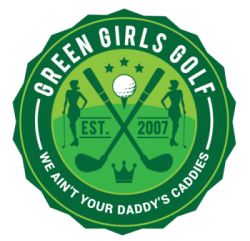
No Comments